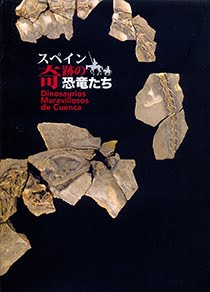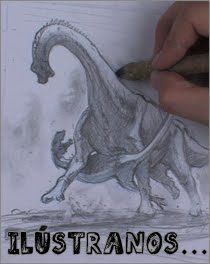Durante la XX edición del Encuentro de Jóvenes Investigadores en Paleontología, celebrada en Cañaveral de León (Huelva), Alberto Cabezuelo y colaboradores han aprovechado la ocasión para presentar el trabajo titulado “Pachyostosis in aquatic amniotes: the case of the Spanish Triassic sauropterygian reptiles”.
En el trabajo mencionado, se hace una breve recopilación, caracterización y comparación del grado de paquiostosis en los distintos taxones de sauropterigios del Triásico de la Península Ibérica. En el presente estudio, se han analizado con detalle los diferentes grupos de Sauropterygia identificados en el registro Triásico Ibérico (i.e., Placodontia, Pachypleurosauria, Nothosauria y Simosauridae) según la bibliografía disponible para aquellos casos en los que determinados elementos anatómicos se han definido como paquiostóticos, además de aquellos cuya apariencia, en base al material fotográfico, mostraban cierto grado de paquiostosis sensu lato. Por último, se ha hecho hincapié en la familia Simosauridae, debido a la reciente descripción del nuevo taxón español Paludidraco multidentatus, un enigmático simosáurido del Carniense (Triásico Superior) interpretado como un nadador lento de aguas someras costeras, cuyo paciente más cercano es Simosaurus gaillardoti (Triásico Superior de Alemania y Francia) y con el cuál difiere, entre otros aspectos, por su alto grado de paquiostosis en las costillas y vértebras de la región dorsal.
A continuación, os dejamos el resumen perteneciente a este trabajo:
Amniotes secondarily adapted to life in water first evolved during the Permian, shortly after the first vertebrates began to be independent from aquatic environments in the Carboniferous. One of these first secondarily adapted lineages, the mesosaurs (reptiles known from the early Permian), were already well adapted to shallow water environments, probably living in inland epicontinental seas. This adaptation implied major changes in the terrestrial amniote skeleton bauplan, such as the thickening of certain axial/appendicular skeletal elements due to modifications in the buoyancy control. This condition, known as ‘pachyostosis’ sensu lato (s.l.), is a non-pathological osseous overgrowth, convergently developed several times in the amniote evolutionary history. Among sauropterygians, a group of aquatic reptiles ranging from the Early Triassic to the uppermost Cretaceous, some taxa adapted to shallow water environments developed pachyostosis s.l. (e.g., pachypleurosaurs, placodonts and some nothosaurs and simosaurids). The aim of this work is to compile, characterize and compare the degree of pachyostosis s.l. in the main Iberian Triassic sauropterygian taxa, especially considering its distribution in a phylogenetic context. In the Iberian Triassic record of Sauropterygia, pachyostosis s.l. is identified in pachypleurosaurs, nothosaurs and simosaurids. This last lineage is especially relevant because the recently described Spanish Upper Triassic Paludidraco multidentatus represents an extreme case of the pachyostosis s.l., radically different from its sister taxon Simosaurus gaillardoti, from the Middle Triassic of France and Germany. In this context, Paludidraco multidentatus was interpreted as a bizarre taxon, showing adaptations for slow movement near the marine bottom of shallow littoral environments. Thus, among the Iberian taxa, Simosauridae and Pachypleurosauria include the most extreme cases of pachyostosis s.l., followed by Placodontia and Nothosauria. In this work, we present a preliminary study based on the available data in the literature and on the preliminary characterization of pachyostosis in several firsthand studied taxa, especially Simosauridae.
-----
Más información:





























No hay comentarios:
Publicar un comentario